All Roads Lead to Rome: Explore 9 Most Famous Ancient Roman Empire Roads
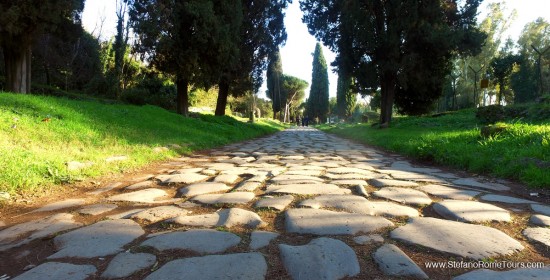
Welcome to Stefano Rome Tours, Rome’s leading tour company for private tours of Rome and Rome shore excursions from Civitavecchia.
Rome, the Eternal City - the epicenter of a vast empire, where the legacy of the ancient Roman Empire lives on through its remarkable network of roads. Built over 2,000 years ago, these ancient routes have withstood the test of time and continue to lead travelers to captivating destinations. inspiring the timeless saying: "All Roads Lead to Rome".
Romans were renowned as great road builders, and these roads varied in size and purpose, from local paths to long-distance highways, connecting cities, regions, and provinces throughout the empire. Over 29 military roads radiated from Rome, while at least 370 roads intertwined the empire's provinces, facilitating the movement of armies, civilians, goods, and communication. Today, we have the privilege of exploring the remnants of these ancient routes and uncovering the secrets they hold.
We invite you to embark on a remarkable journey as we explore the 9 most famous ancient Roman Empire roads that still connect us to the past. Imagine walking along the legendary Via Appia, known as the "Queen of Roads". Follow Via Ostiensis which leads you to the ancient port city of Ostia Antica. Traverse the scenic Via Cassia that reveals picturesque landscapes and charming towns in Tuscany, or journey along the Via Tiburtina, taking you to the enchanting town of Tivoli. Each road carries with it a rich tapestry of history and captivating destinations.
Most Famous Ancient Roman Empire Roads
1. Appian Way / Via Appia
First on our list of most famous Ancient Roman Empire roads is the iconic Via Appia, or the Appian Way, was constructed in 312 BC and stretched over 500 kilometers, held immense significance as a vital trade and military route in ancient Rome. Join us as we explore the well-preserved sections of this historic road, adorned with tombs, monuments, and picturesque countryside scenery, and uncover the secrets of its storied past.
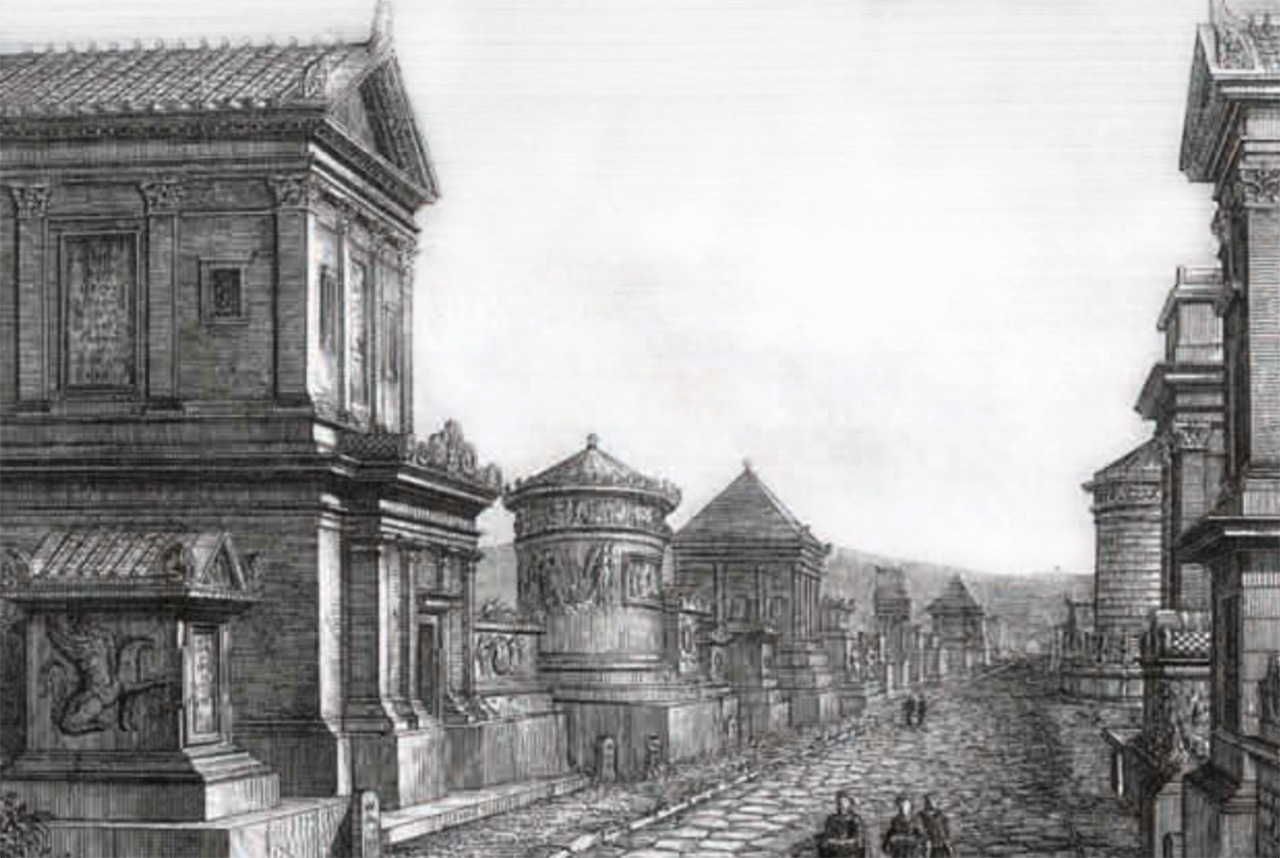
-
Historical Significance and Geographical Route of Via Appia
The Appian Way, aptly named after the Roman censor Appius Claudius Caecus, holds a significant place in history as one of the earliest and most strategically important Roman roads. Its construction during the Samnite Wars marked its military origins, initially serving as a vital artery for the movement of troops and supplies to the southern regions of Italy. Over time, it evolved into a lifeline for military communication and played a pivotal role in the Roman conquest of the region.
The Appian Way swiftly gained renown as the "Queen of the Long Roads", (Regina Viarum) symbolizing its critical importance in the Roman Republic. Its reach extended far beyond the city of Rome, connecting the empire's vast territories and expanding Roman influence. Serving as the backbone of the Roman transportation system, the Appian Way facilitated the movement of troops, trade caravans, messengers, and ideas, solidifying Roman control and enabling cultural exchanges.
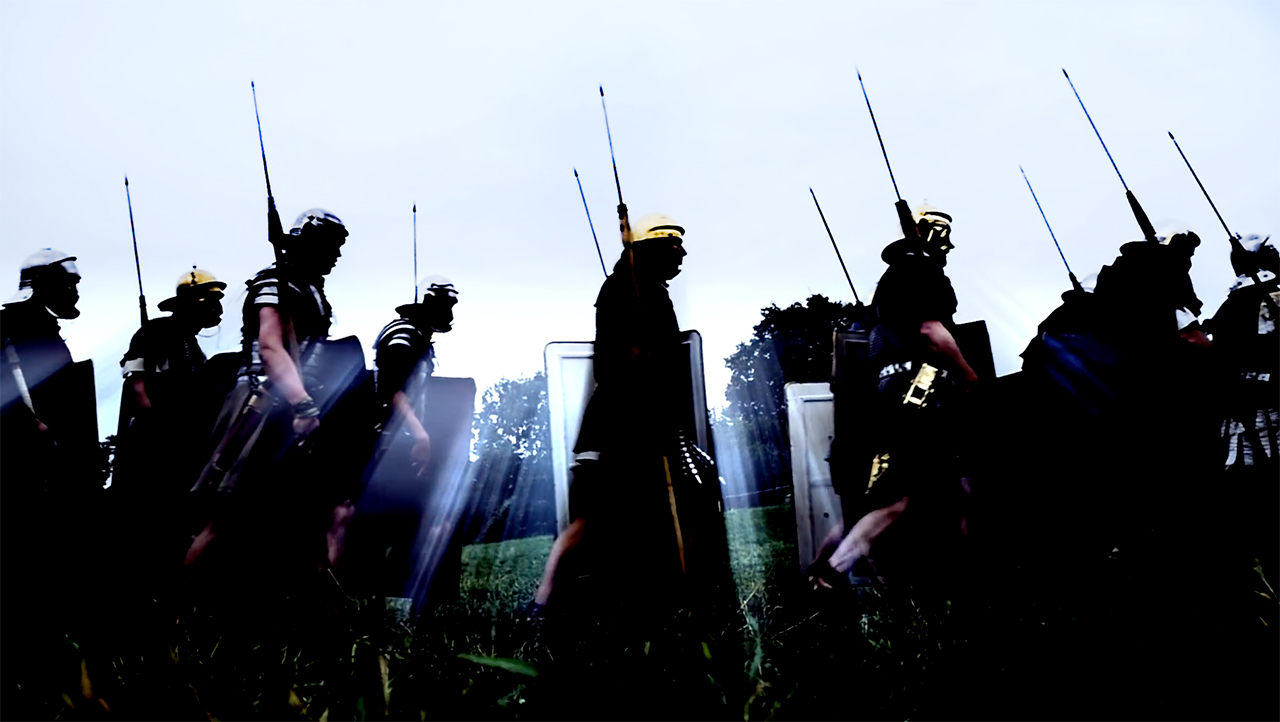
-
Today's Remnants of Appian Way/ Via Appia
While centuries have passed and the modern landscape has transformed, fragments of the Appian Way continue to stand, offering a tangible connection to its remarkable legacy. Walking along the present-day route allows you to trace the ancient paving stones, marvel at the tombs and monuments that line its path, and immerse yourself in the stories of this historic road. As you follow in the footsteps of ancient Romans, you can envision the bustling activity, momentous events, and vibrant life that once defined this illustrious path.
Along Via Appia, you will also discover well-preserved sections adorned with impressive tombs like the Tomb of Cecilia Metella, monumental landmarks, and the breathtaking natural scenery of the surrounding countryside. From the renowned Christian Catacombs to the once majestic Circus of Maxentius, and the ancient milestones that marked the way, each step along the Appian Way reveals a glimpse into the rich tapestry of ancient Roman history.
Our private Rome Tours you can venture to the ancient section of the Ancient Appian Way where you may let the ancient stones beneath your feet carry you back more than 2,000 years as you immerse yourself in the grandeur of one of Rome's most iconic and historically significant roads.
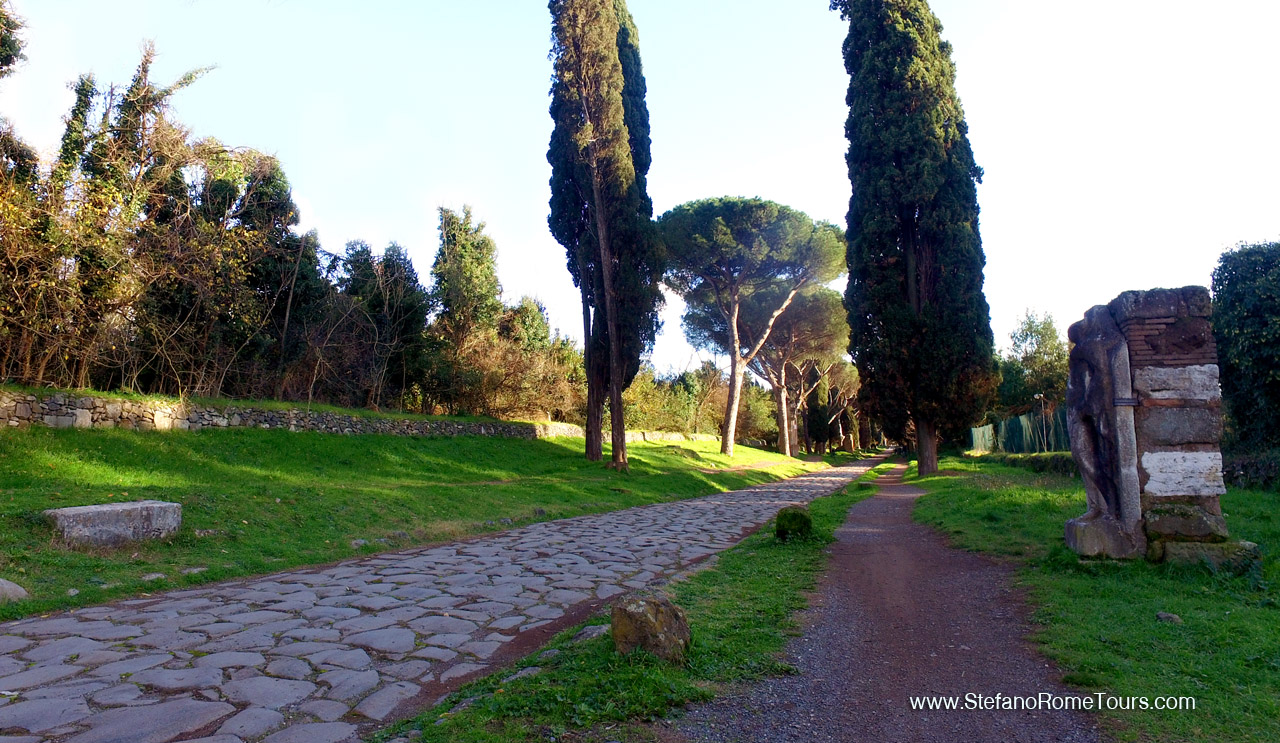
2. Via Ostiensis
Named after the ancient port of Ostia Antica, the Via Ostiensis served as a crucial artery connecting Rome to the Mediterranean and beyond. Spanning approximately 30 kilometers, this historic road played a pivotal role in facilitating cultural exchanges, economic prosperity, and maritime endeavors. Let us delve into the fascinating history of the Via Ostiensis and discover the stories that unfolded along its path.
-
Tracing the Route of Via Ostiensis
The road began near the ancient Forum Boarium, meandering along the eastern bank of the Tiber River, passing through the ancient city walls at the Porta Trigemina. With the construction of the Aurelian Walls, the Via Ostiensis found a new passage through the Porta Ostiensis, known today as Porta San Paolo. This strategic gateway solidified its role as a link between Rome and the bustling port city of Ostia Antica.
-
The Legacy of Trade and Decline of Via Ostiensis
In its prime, the Via Ostiensis bustled with the exchange of goods, cultural influences, and maritime activities that fueled the prosperity of the Roman Empire. However, as the empire faced economic challenges in the late Roman era, trade along this ancient route gradually diminished, and the once-thriving port of Ostia experienced a gradual decline. Nevertheless, the legacy of the Via Ostiensis endures, echoing the maritime past of Rome and offering a glimpse into the grandeur of ancient seafaring endeavors.
-
Modern Via Ostiense
Today, the modern Via Ostiense follows a similar path, serving as a vital connection between Rome and Ostia, a vibrant seaside city and the ancient Roman city of Ostia Antica.
-
Landmarks and Highlights along Via Ostiense
Continuing along the modern Via Ostiense, we encounter notable landmarks like the magnificent Basilica of Saint Paul Outside the Walls, a testament to Rome's enduring architectural grandeur. Guests have the opportunity to explore the rich history and religious significance of this awe-inspiring basilica on our Postcard Rome Tour.
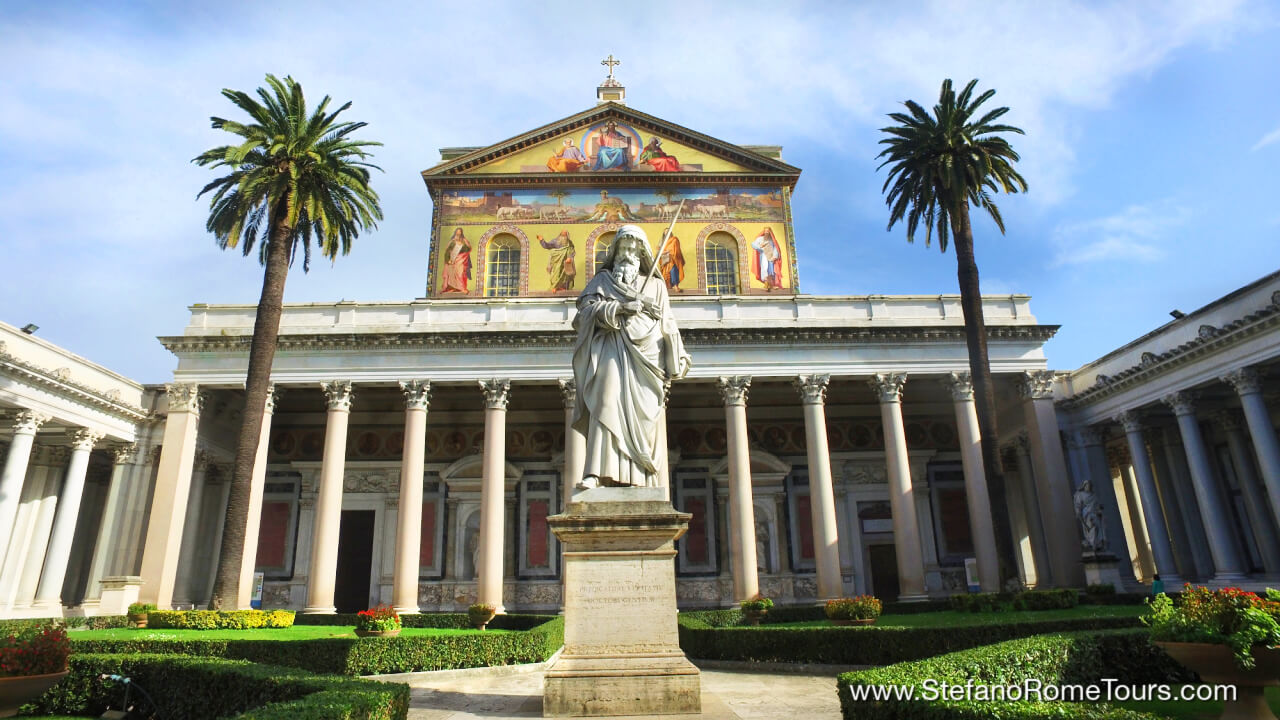
A pivotal stop along the Via Ostiensis is Ostia Antica, which stands as a testament to the grandeur of ancient Rome's port city. Immerse yourself in the remarkably preserved ruins of this once-thriving metropolis, including the Forum, grand amphitheater, and impressive mosaics. Transport yourself back in time and witness the bustling activity and maritime power that characterized Ostia during the height of the Roman Empire.
Walk in the footsteps of ancient Romans, experience the majesty of these historic sites, and feel the connection to the past as you traverse the very roads that have witnessed the ebb and flow of history for over two millennia. Guests can also explore the fascinating origins of Italy of the ancient Etruscan and Roman eras on our Ostia Antica and Cerveteri Tours from Rome.
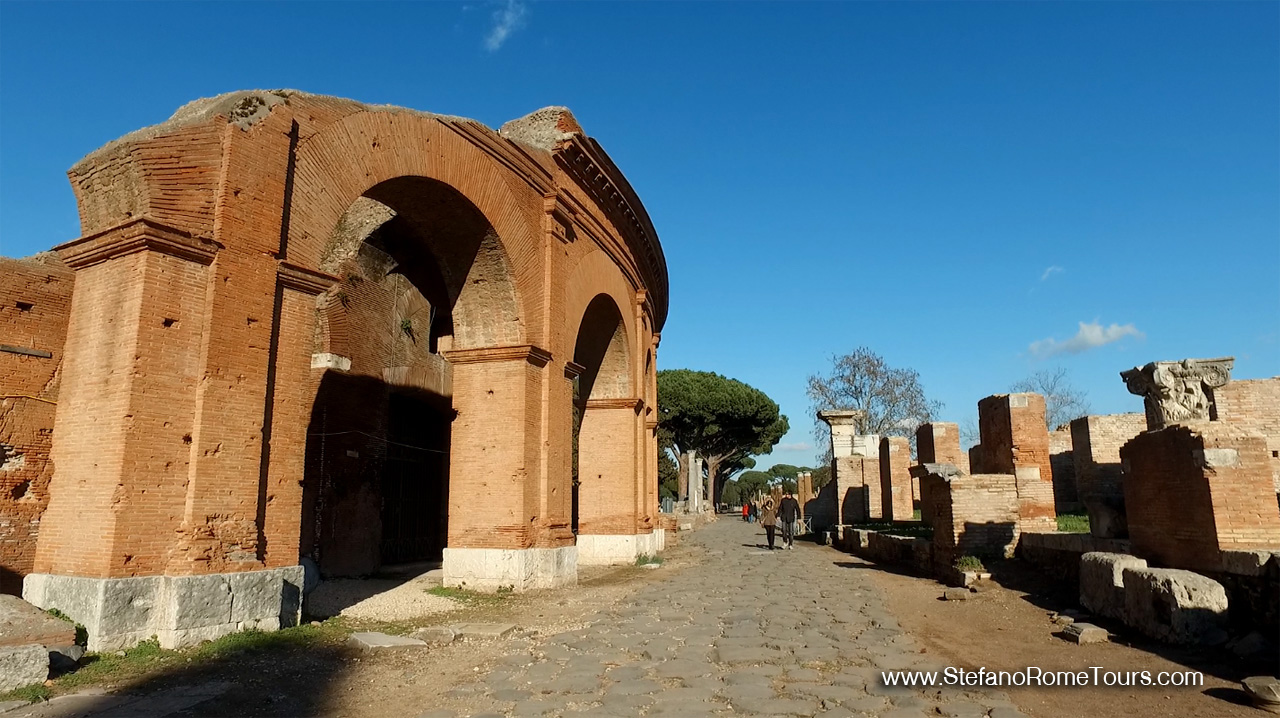
3. Via Aurelia
Third on our list of most famous Ancient Roman Empire roads is Via Aurelia, another iconic Roman road that stretched from Rome to the picturesque western coast of Italy. This historic route, named after the Roman consul Marcus Aurelius Cotta, played a pivotal role in the expansion of Roman influence.
-
Via Aurelia was an Essential Trade Route
Via Aurelia held significant importance as a vital trade route during the Roman Republic and Empire. Constructed during the 3rd century BC, the Via Aurelia symbolizes Roman engineering prowess and their commitment to infrastructure development. It too served as a lifeline, facilitating the movement of goods, troops, and messengers, contributing to the growth and prosperity of Rome and its territories including cities such as Pisa, Genoa, and beyond.
-
Scenic Landscapes Along Via Aurelia:
The Via Aurelia starts its journey from Rome, departing through the iconic Porta Aurelia. The modern-day Strada Statale 1 (SS1) follows the ancient path of Via Aurelia.
As you venture westward, you will be captivated by the breathtaking landscapes that unfold before your eyes. From rolling hills to fertile plains and rugged terrain, each mile of the road offers a new perspective on the beauty of the Italian countryside.
The Via Aurelia meanders through vibrant countryside towns and cities, each with its own unique charm.
Civitavecchia, the bustling port of Rome where cruise ships bring millions of cruisers, offers a glimpse into its rich history through its charming old town and notable landmarks like the Michelangelo Fortress.
Renowned for its UNESCO World Heritage Site, the Banditaccia Etruscan Necropolis of Cerveteri showcases intricate tombs that provide insights into ancient burial customs. For a fascinating experience exploring Italy's ancient civilization, you may explore both Cerveteri and Ostia Antica on a day trip from Rome.
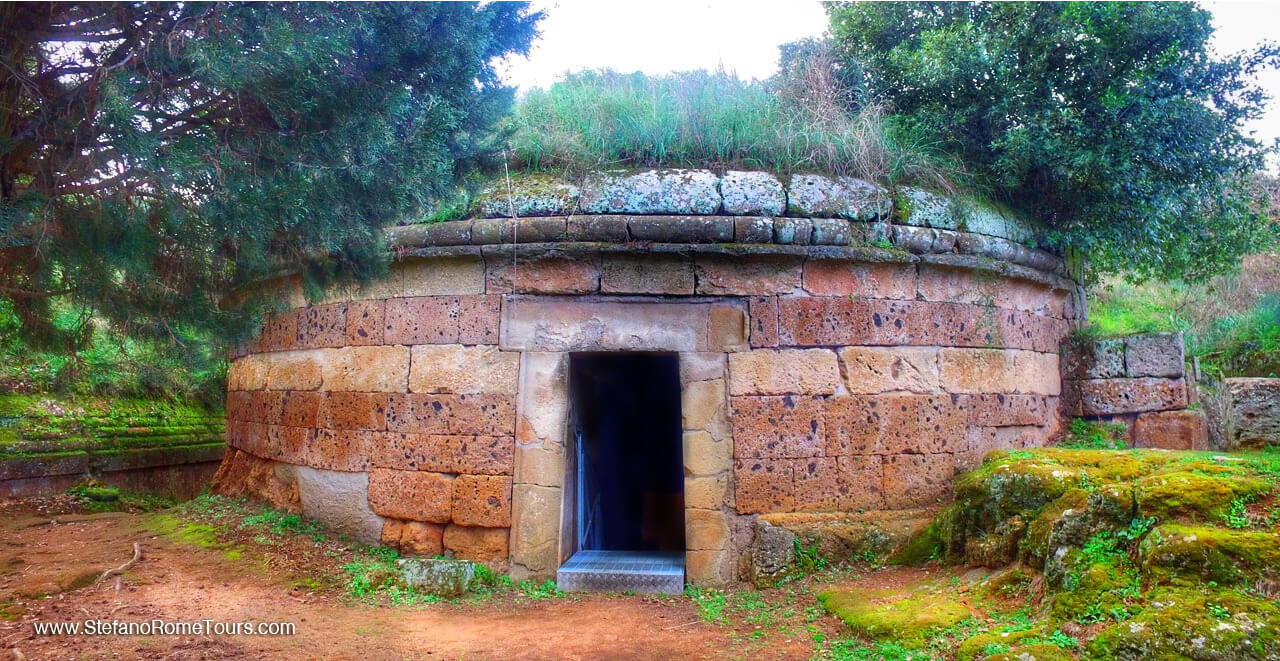
Tarquinia, featured on our Etruscan Mystery Tour from Rome and also a UNESCO World Heritage Site, is also an ancient necropolis of well-preserved painted Etruscan tombs from about 2,500 years ago.
With a captivating Medieval center in addition to the famous Monterozzi Etruscan Necropolis, Tarquinia invites you to delve into the art, culture, and daily life of the Etruscan civilization.
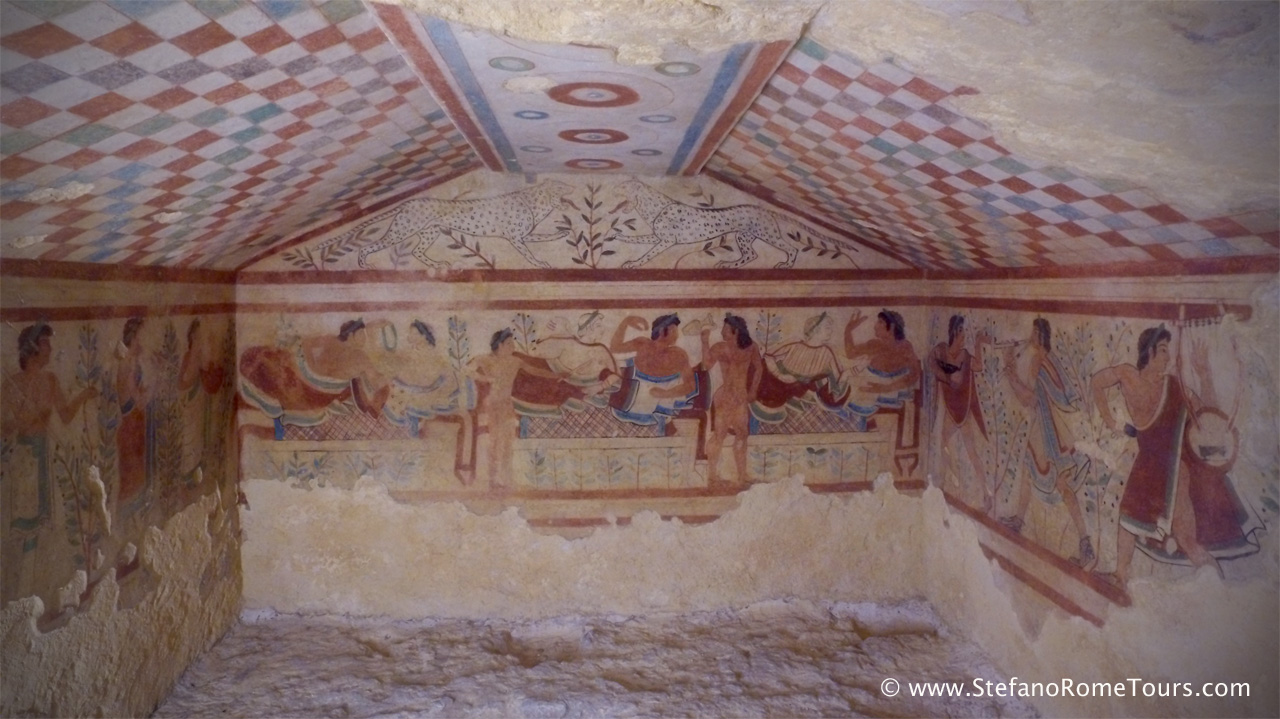
4. The Via Cassia
Via Cassia (Way of Cassius) is a significant Roman road that dates back to the 2nd century BC. This strategic transportation network connected Rome to central and northern Italy, playing a crucial role in trade, military expeditions, and cultural exchange. This road led from Rome to Florence, passing through the regions of Lazio and Tuscany.
-
Modern-Day Via Cassia
The Via Cassia commences at the Porta Romana in Rome through the picturesque Italian countryside. Sections of Via Cassia are now part of the modern Strada Statale 2 (SS2). As you venture northwest, the road unveils breathtaking landscapes, including fertile plains, gentle hills, and lush valleys.
-
Enchanting Towns Along Via Cassia
The Via Cassia weaves its way through a multitude of ancient towns and settlements, each with its own unique charm.
Sutri
This charming Medieval town boasts a fascinating mix of Etruscan and Roman archaeological sites, including an impressive amphitheater carved into the tuff rock. You can visit Sutri, Viterbo and Calcata from Rome.
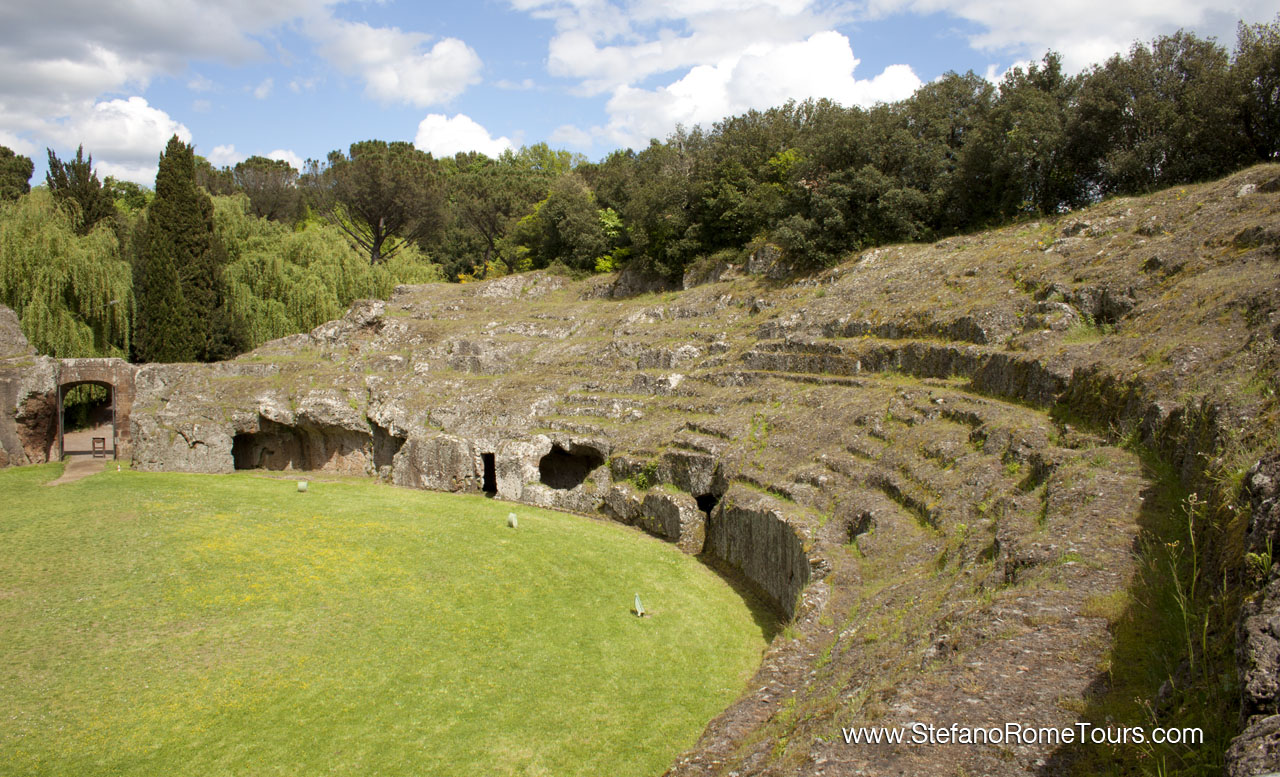
Chiusi
Renowned for its Etruscan heritage, the charming Tuscan town of Chiusi invites you to explore underground tombs, visit an Etruscan museum, and admire the city's medieval charm.
Arezzo
As a major city along the Via Cassia, Arezzo in the heart of Tuscany showcases a wealth of Roman and Renaissance architecture, including the iconic Piazza Grande and the magnificent Basilica of San Francesco. You may book a day trip from Rome to Arezzo and Cortona and enjoy two of Tuscany’s most remarkable towns.
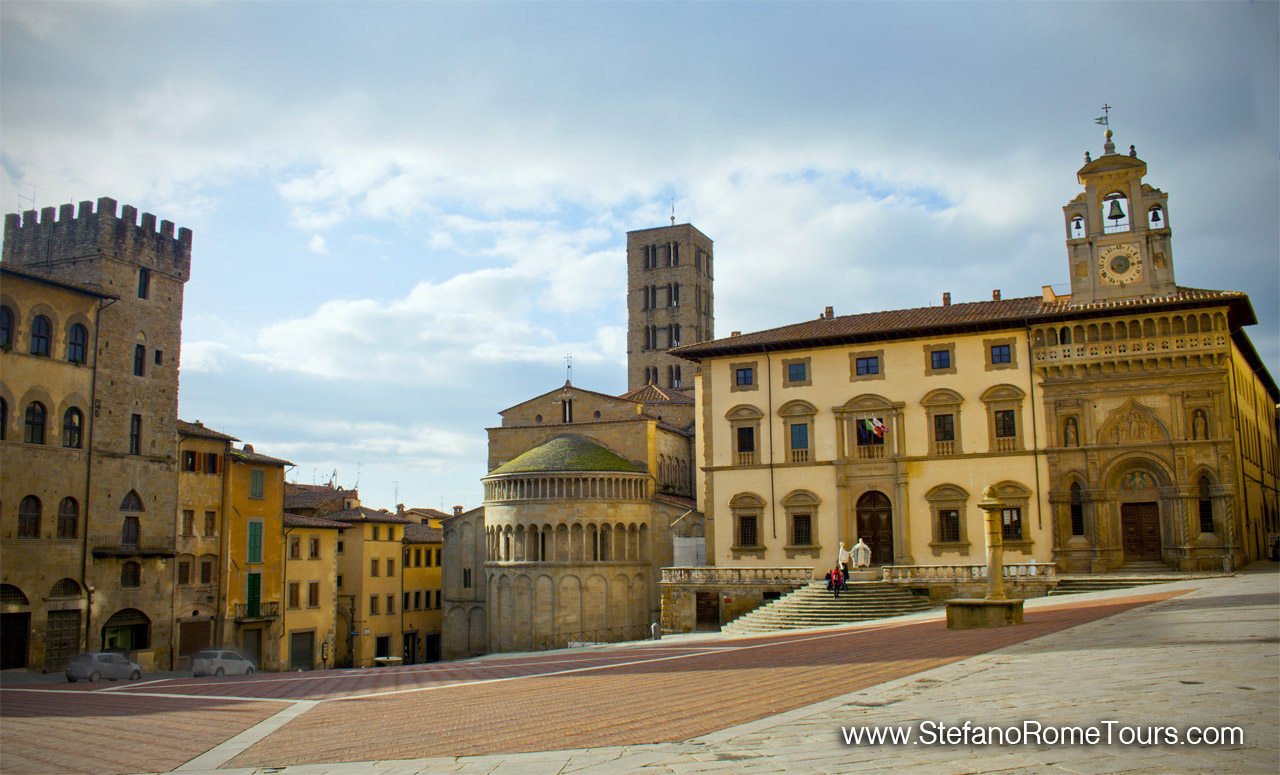
5. Via Clodia
Following along the most famous Ancient Roman Empire roads is Via Clodia. Named after the influential Roman noble Clodius from the Republican era, Via Clodia is a mid-range ancient Roman road that served as a vital connection between the Via Cassia and the Via Aurelia whose primary purpose was facilitating commercial traffic rather than military movement.
The origins of Via Clodia have long intrigued scholars, with most attributing its construction to the Romans on a pre-existing Etruscan route. Specifically, between the towns of Sorano, Pitigliano and Sovana, the road followed the path of the ancient Etruscan Vie Cave. While the exact timeline remains debated, references to Via Clodia begin to emerge towards the end of the 3rd century BC.
Significant developments occurred after the Romans achieved decisive victories over the powerful Etruscan cities. Following the submission of Veii in 396 BC, Tarquinia in 281 BC, Vulci in 280 BC, Cerveteri in 273 BC, and Volsinii in 265 BC, the construction of Via Clodia gained momentum. In 225 BC, a pivotal moment in its history, the road underwent an expansion and was meticulously paved, solidifying its role as a crucial thoroughfare connecting Rome to its key colonies in ancient Etruria.
Once a vital artery connecting Rome with the centers of Northern Etruria, the Via Clodia continues to serve as an extraordinary reference point, offering insights into the interconnectivity of these central Italian regions.
-
Landmarks and Highlights along Via Clodia
Today, only fragments of the ancient Via Clodia's paving stones have resurfaced in various villages, scattered between Rome and Tuscany. Here are some of the key landmarks along the way:
Lake Bracciano
Via Clodia winds its way along the picturesque Lake Bracciano, offering breathtaking views along the route. Along this stretch, the road leads to the Baths of Vicarello (Bagni di Vicarello), once a popular and sought-after destination for those seeking relaxation and rejuvenation. Lake Bracciano is famous for the historic town of Bracciano which boasts the impressive Orsini-Odescalchi Castle.
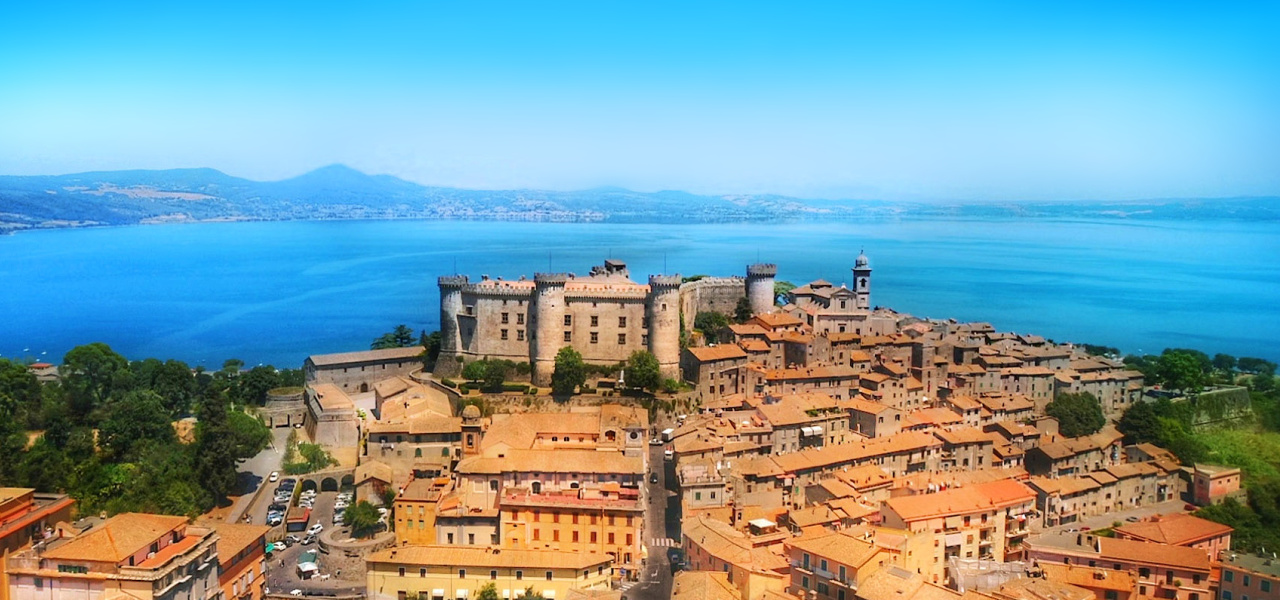
Tuscania
Explore the ancient town of Tuscania, an archaeological treasure trove that was once a bustling Etruscan settlement. Uncover its well-preserved ruins, including the Romanesque Basilica of San Pietro and the nearby Basilica of Santa Maria Maggiore adorned with intricate medieval carvings. Wander through the charming historic center that exudes timeless charm.
On our Medieval Wonders Countryside Tour from Rome you may see for yourself a stretch of this ancient Roman road Via Clodia (similar to Via Appia) in Tuscania just below Colle San Pietro upon which a magnificent basilica was built a thousand years ago.
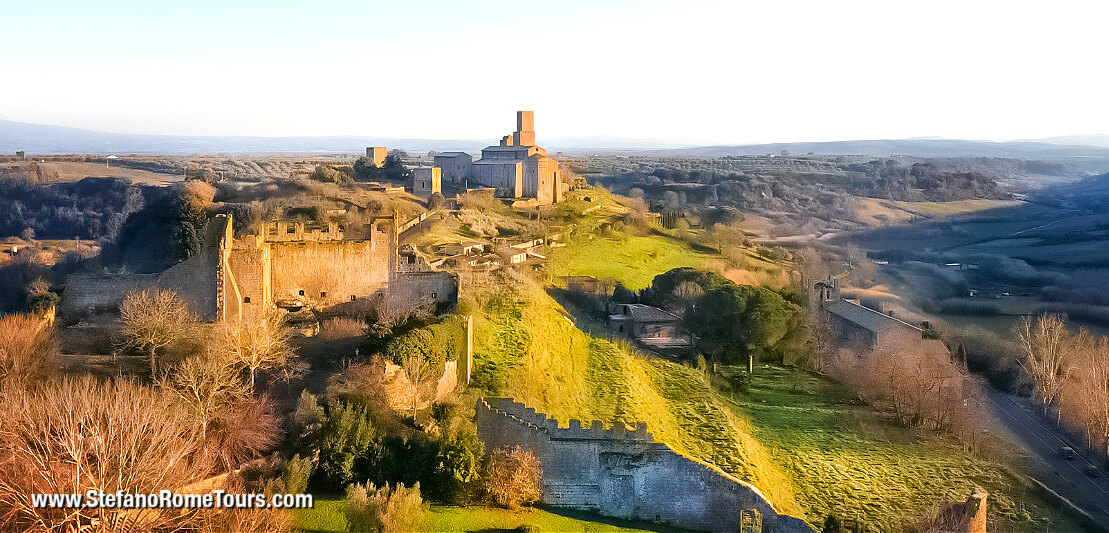
Ancient Etruscan cities: Veii, Vulci, Volsini, Cerveteri, and Tarquinia:
Once a powerful rival of Rome, Veii showcases fascinating archaeological remains and provides insights into the ancient Etruscan civilization. Vulci boasts ancient ruins, including the impressive remains of the Etruscan city and the striking Vulci Necropolis. Also known as Bolsena, Volsinii Vecchia is an archaeological site located near Lake Bolsena.
Of course, Cerveteri and Tarquinia are the most famous Etruscan cities whose remarkable necropoleis are featured in our Rome Countryside Tours to Tarquinia Monterozzi Necropolis, and Castles and Lakes Countryside Tour from Rome to Cerveteri Banditaccia Necropolis.
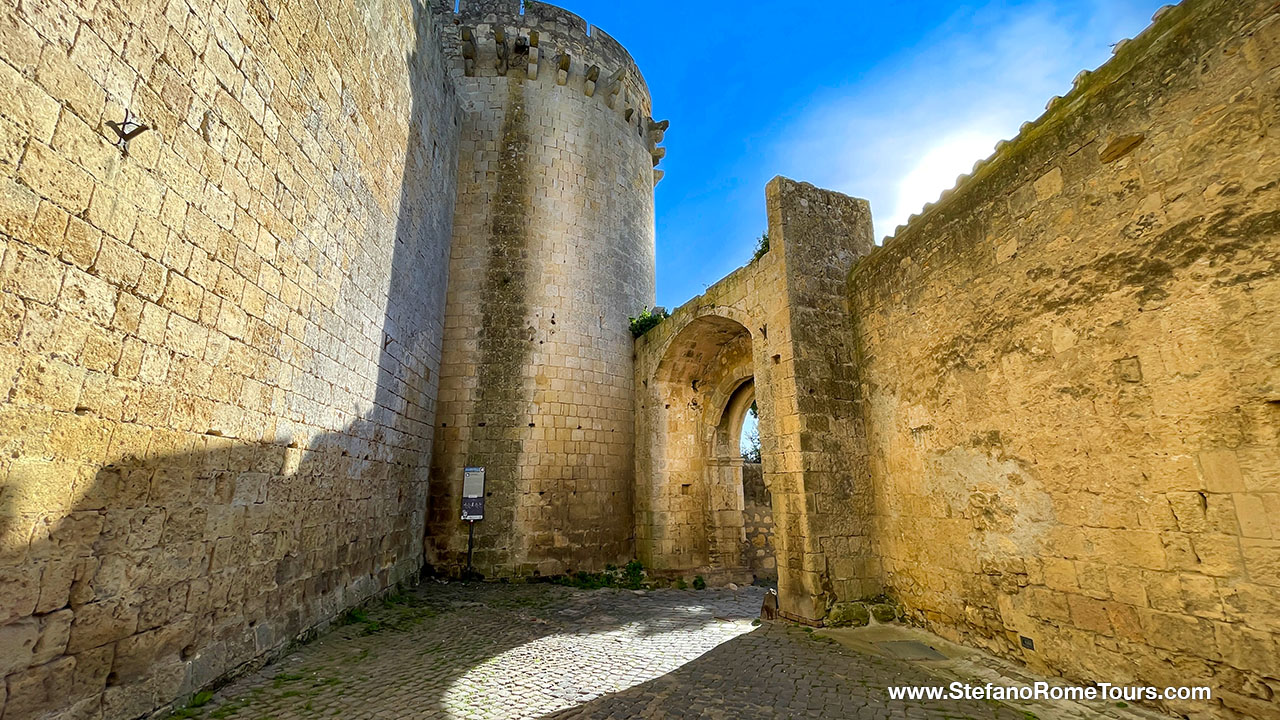
Saturnia
Via Clodia, also affectionately known as the "Thermal Way," earned its nickname due to its connection to numerous natural spas. Among its notable destinations was the renowned city of Saturnia, considered one of the most significant natural spa locations in central Italy.
Getting from Rome to Saturnia is easy. Positioned along the southern side of the Saturnia Walls, this historic entrance marks the path of the ancient Via Clodia, which remains clearly visible to this day. As the road progresses, it serves as a vital link connecting the contemporary cities of Saturnia, Manciano, and Montemerano. We bring many travelers from Rome Airport to Saturnia to enjoy a relaxing holiday at the thermal baths.
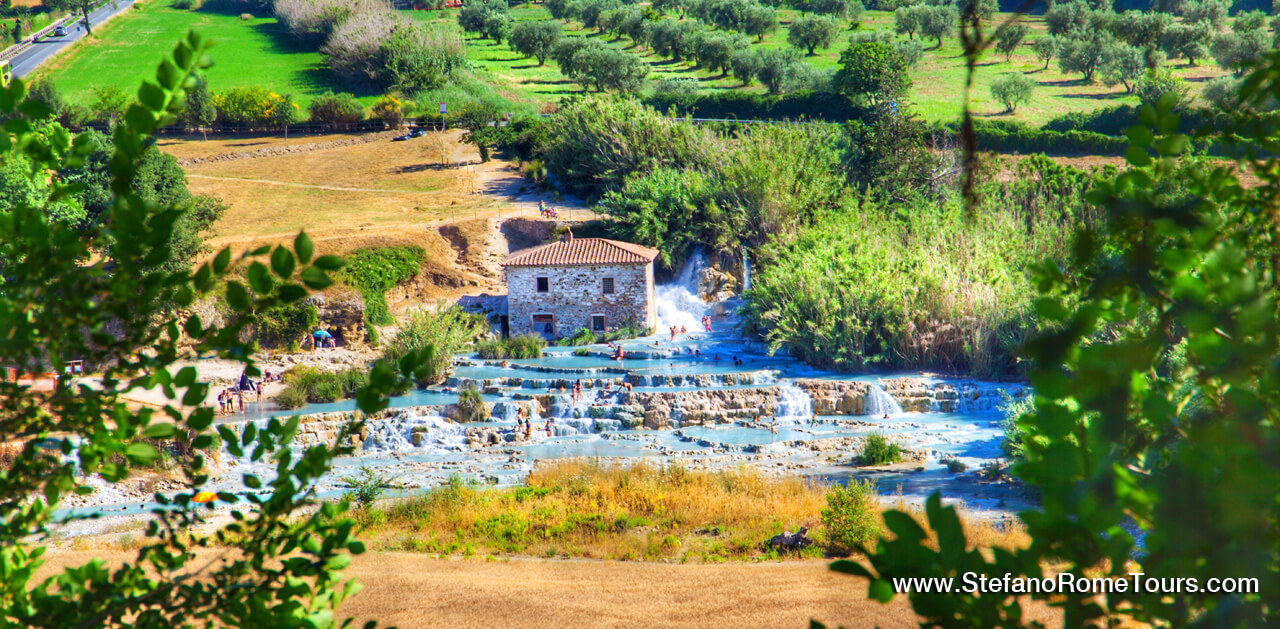
6. Via Tiburtina
Named after the town of Tibur (modern-day Tivoli), the Via Tiburtina was a vital road leading east-northeast from Rome to Tivoli.
Its construction is attributed to the Roman censor Marcus Valerius Maximus during the conquest of the Aequi territory in 307 BC. Initially, the road extended up to Corfinio in the province of L'Aquila. The section leading to Tivoli was named Via Tibur, while the latter part became known as Via Valeria. During the reign of Emperor Claudius, between 48 and 49 AD, the road was extended all the way to Pescara on the opposite coast, becoming the Via Claudia Valeria.
-
Historical Significance and Geographical Route of Via Tiburtina
The origins of the Via Tiburtina can be traced back to ancient times, well before the rise of Roman civilization. Even in the Neolithic era, nomadic cultures are believed to have traversed this route, herding their sheep or goats. They would have followed the path from the Appenine hills, beyond Tivoli, descending towards the flat lands near the Tiber River.
This cyclical journey, known as transhumance, was a ritualistic act repeated with each changing season. It reflected the deep connection between human communities and the natural landscape, as they relied on the fertile plains for their herds' sustenance.
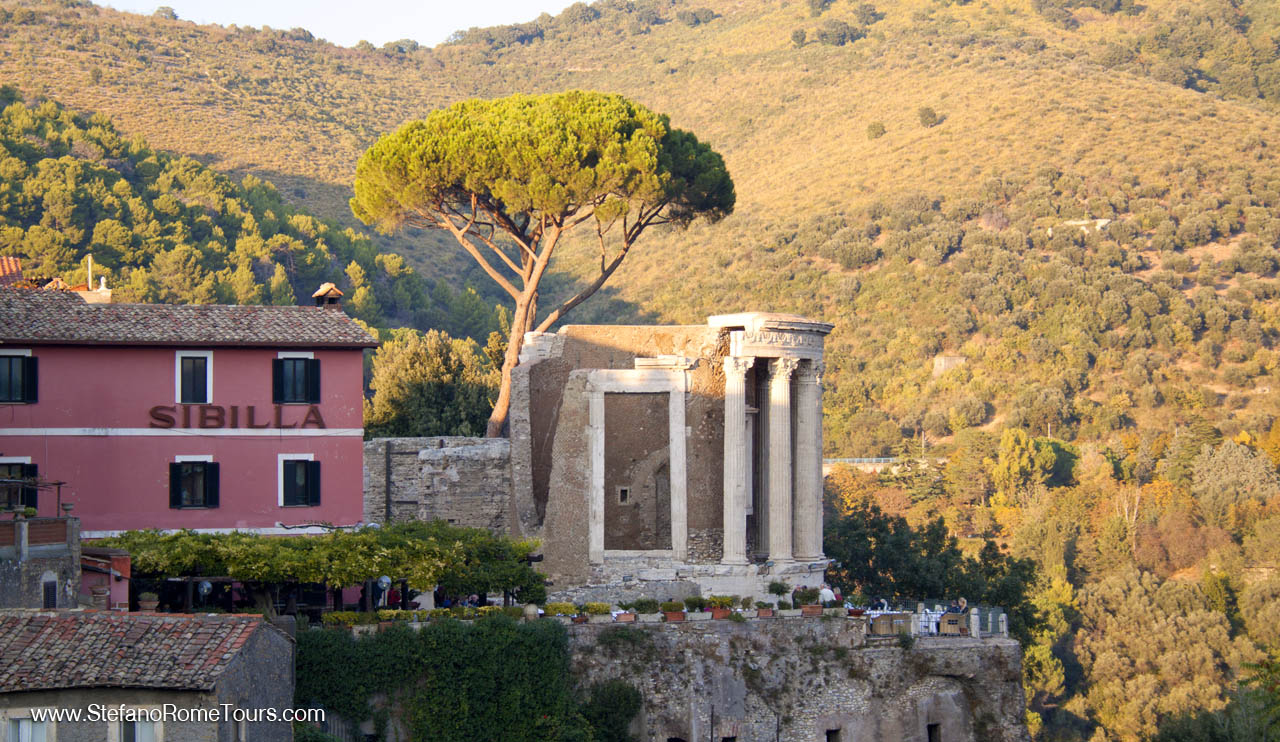
Later in time, Via Tiburtina became an important ancient Roman road, extending beyond the boundaries of Rome through two prominent city gates. It passed through the Aurelian Wall at the Porta Tiburtina, and through the Servian Wall at the Porta Esquilina serving as a vital artery connecting the city to the town of Tibur (Tivoli), once the residence of Roman Emperor Hadrian known as “Hadrian’s Villa” (Villa Adriana).
-
Trade, Connectivity, and Expansion of Via Tiburtina
In the times of the Roman Republic, the Via Tiburtina held immense significance as it served as a crucial route for transporting agricultural goods and marble from Tivoli and its surroundings to the Eternal City.
This road attracted merchants, pilgrims, and travelers, fostering economic growth and cultural enrichment. The expansion of the Via Tiburtina into the territories of the Marsi and the Aequi further extended Roman influence and solidified control over the region.
-
The Via Tiburtina Today
Today, the modern Via Tiburtina Valeria (SS5) still connects Rome to Chieti and Pescara, albeit not following the exact original route throughout.
The initial stretch of the Via Tiburtina lies within the Tiburtino district, with the area on the right side of the street known as San Lorenzo. This vibrant neighborhood is home to a significant portion of Rome's student population, infusing the area with a lively atmosphere.
As you continue along the road, you will encounter Rome's largest cemetery, known as Verano. Adjacent to the cemetery stands the remarkable Basilica of Saint Lawrence Outside the Walls, a splendid church renowned for its architectural beauty. These landmarks add to the historical and cultural richness that can be experienced while traveling along the Via Tiburtina.
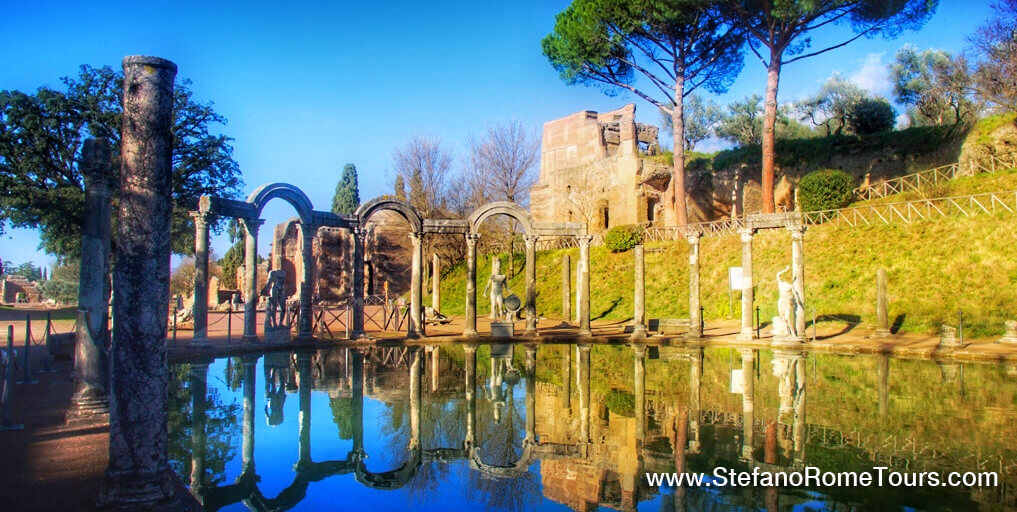
Via Tiburtina’s original destination was the captivating town of Tivoli, renowned for its UNESCO World Heritage Sites such as Hadrian's Villa (Villa Adriana) and Villa d'Este, to the charming towns scattered throughout the landscape, the Via Tiburtina offers a captivating blend of ancient history and modern wonders.
Our guests have the opportunity to explore both Hadrian’s Villa and Villa d’Este on our Tivoli Tours from Rome.
7. Via Flaminia
Not to be missed on our most famous Ancient Roman Empire roads is Via Flaminia a renowned Roman road constructed in 220 BCE. Named after its creator, the Roman censor Gaius Flaminius, this ancient thoroughfare held immense importance as it connected Rome to the Adriatic coast.
-
Historical Significance of Via Flaminia
Stretching approximately 240 kilometers (150 miles), the Via Flaminia served as a vital link, facilitating trade, military expeditions, and cultural exchanges throughout the vast Roman Empire, ensuring efficient governance and military control.
Moreover, it became the setting for remarkable events, including via Flaminia led Constantine the Great's army to the Milvian Bridge which resulted in his victory and later the Christianization of the Roman Empire.
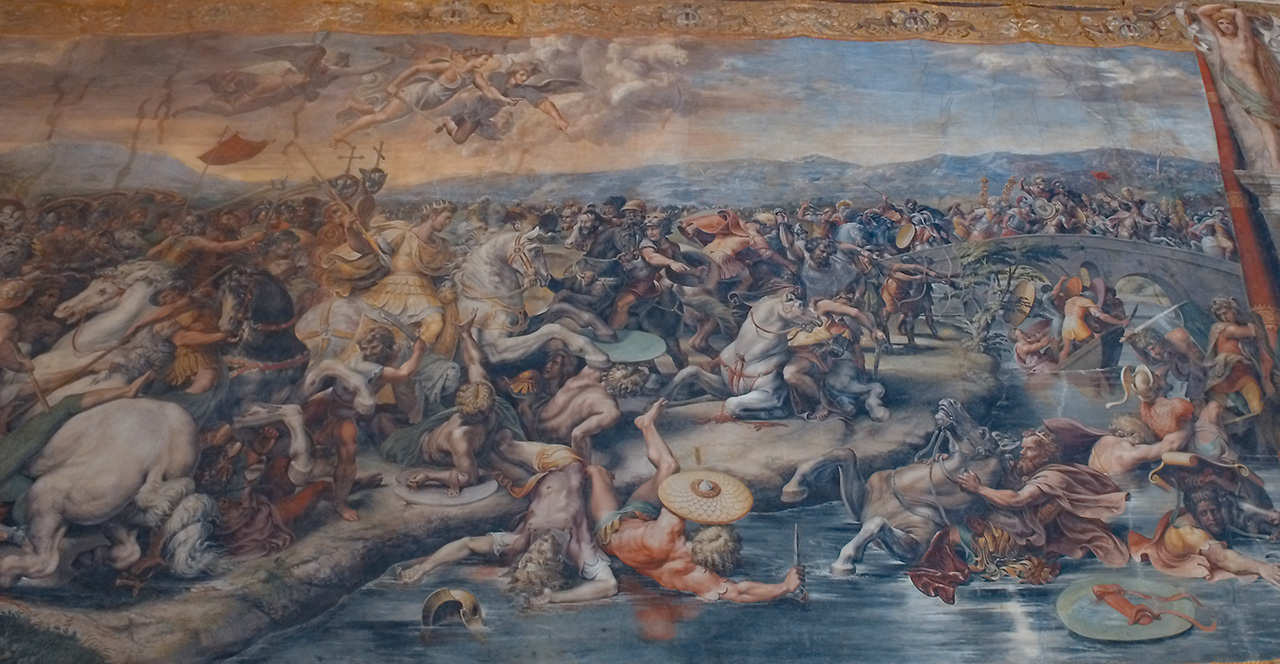
-
Geography and Highlights along Via Flaminia
The journey along Via Flaminia began at the Fontinalis or Ratumena gate, tracing its path from the slopes of the Capitoline Hill along the Via Lata, known today as Via del Corso, until reaching the Flaminia gate in the vibrant Piazza del Popolo.
From there, the consular road stretches onward, following a direct route towards the Tiber River and crossing it via the historic Milvian Bridge before continuing northeastward. Along the course of Via Flaminia, a multitude of mausoleums and funerary monuments adorned its sides, testaments to the rich history and reverence for the departed
Via Flaminia is now known as Strada Statale 3 (SS3) and still serves as a major route in Italy. Along its path, travelers were treated to captivating vistas of the Italian landscape, including picturesque river crossings, dense forests, and fertile valleys.
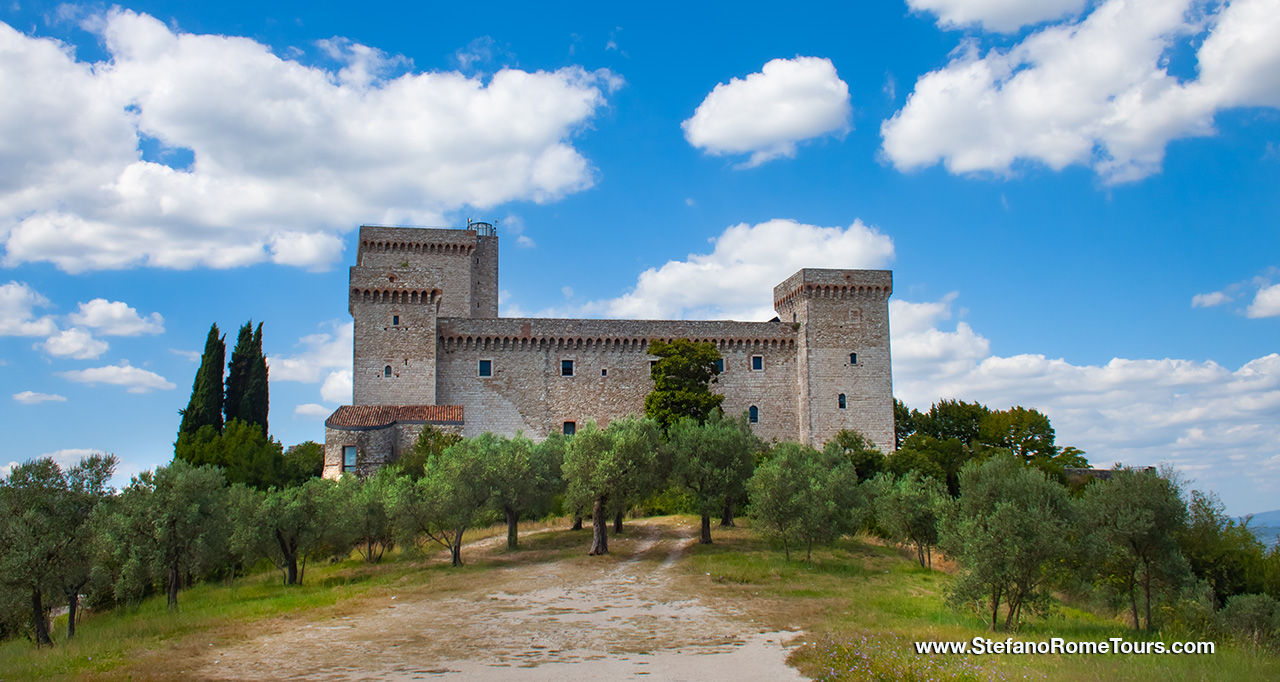
Narni:
Explore the historic town of Narni, home to the impressive Ponte d'Augusto, a Roman bridge spanning the Nera River. Uncover the secrets of the underground tunnels within the Rocca Albornoziana fortress and immerse yourself in the medieval charm of the town center.
Spoleto
Discover the cultural treasures of Spoleto, where a well-preserved Roman theater stands as a testament to the city's rich history. Marvel at the grandeur of Spoleto Cathedral and lose yourself in the enchanting winding streets that exude medieval charm.
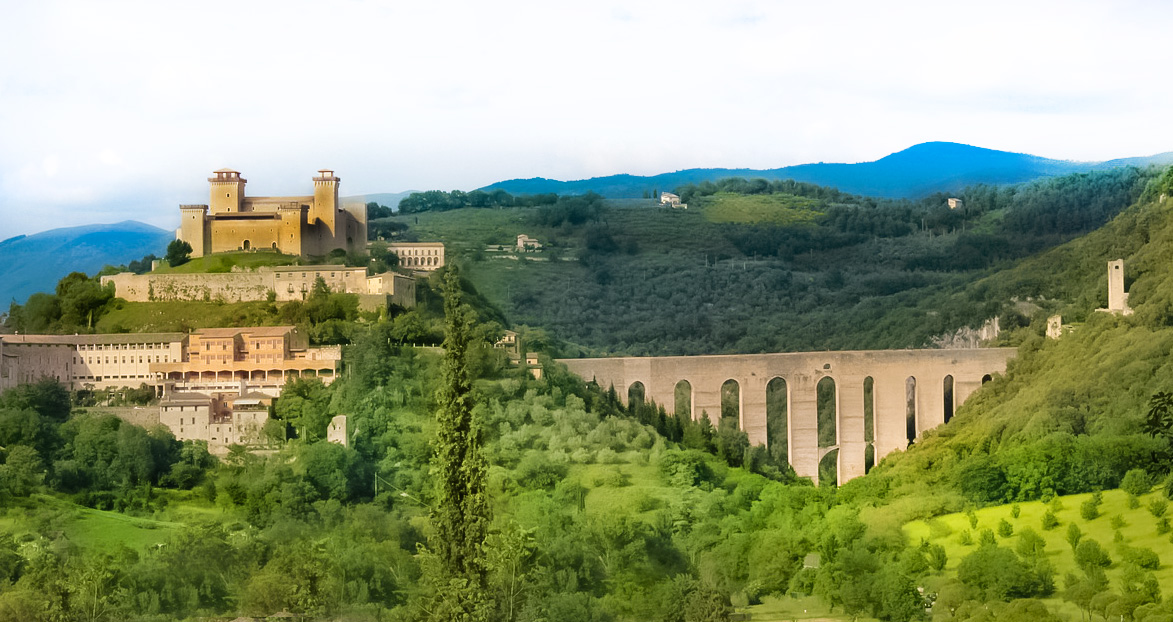
8. Via Salaria
Via Salaria, one of the oldest consular roads built by the Romans themselves. This historic route, still in operation today as State Road 4 (SS 4), connects the capital city of Rome to the picturesque town of Rieti, ultimately reaching the Adriatic Sea.
-
The Via Salaria: The Salt Road of Ancient Rome
The Via Salaria, known as the Salt Road, serves as a vital link between Rome and the Adriatic Sea, traversing the winding Apennine mountains. Its name originates from its historical purpose of transporting salt, an essential commodity in ancient times.
Believed to be one of the oldest Roman roads, its existence can be traced back to at least the 4th century BC, although some theories suggest an even earlier origin. The current route follows the Salaria Nova, a road constructed during the reign of Emperor Nerva (96-99 AD) to create a more direct path after departing from Rome.
Within the boundaries of Rome, the urban segment of Via Salaria emerged from Port Collina on Servian walls. It meandered along the western slopes of the Quirinal Hill, tracing a path that would eventually encompass the location where the Trevi Fountain would later be constructed. From Rome, Via Salaria stretched straight to Forte Antenne, crossing the Aniene River, and continues for several kilometers until reaching the present-day township of Fidene.
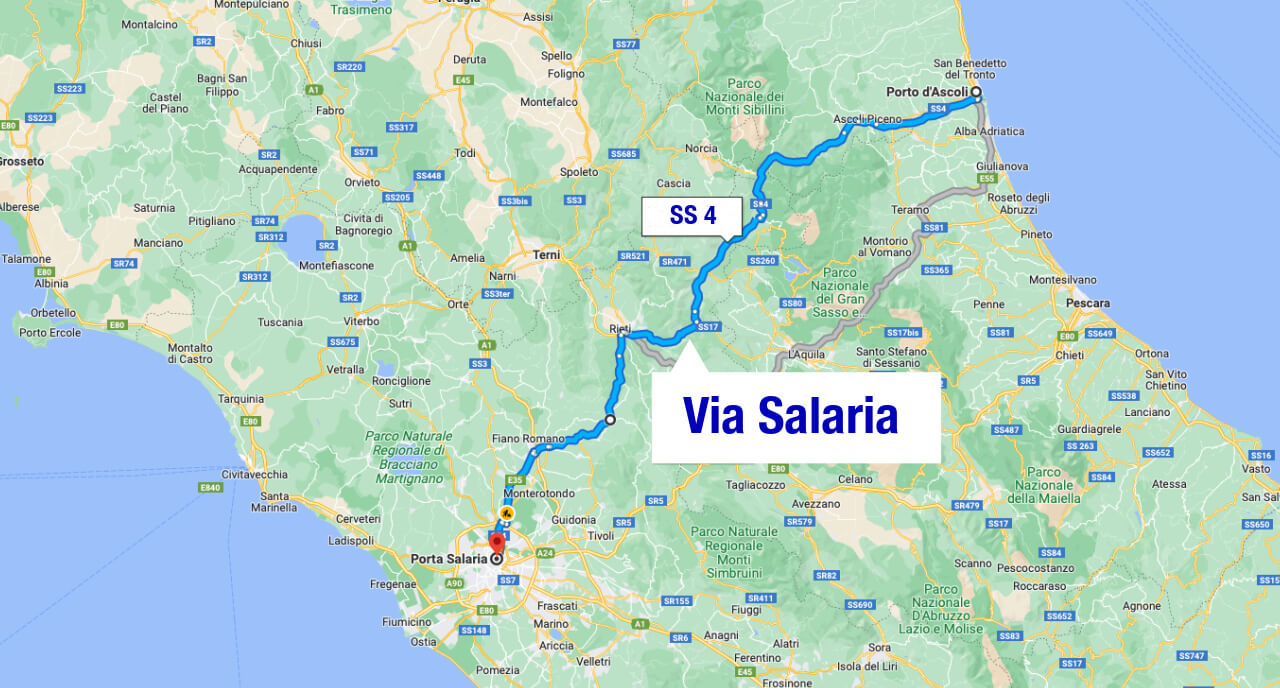
As the Via Salaria became a prominent road within Rome, it adhered to Roman regulations and construction techniques, gradually evolving into one of the empire's most significant thoroughfares. Its strategic importance for trade and transportation further solidified its role in connecting different regions of the Roman Empire.
-
Ancient Origins and Sabine Influence
Originally, the Via Salaria connected Reate (modern-day Rieti) and the Sabina region to the Campus Salinarum, the salt production area located at the present-day Port of Ascoli. Salt held immense importance as a valuable resource for nutrition and food preservation, driving a thriving trade along the road.
The Sabines, who relied on this route to transport salt, were later incorporated into the Roman Empire, leading to the extension of the Via Salaria all the way to Rome. This amalgamation created a unified road linking the Tyrrhenian and Adriatic coasts. Augustus, the first Roman emperor, bestowed the name "Salaria" upon the entire route.
9. Via Nomentana
Last but not least on our most famous Ancient Roman Empire roads is Via Nomentana, an ancient Roman road that originated in Rome and stretched northeast towards the town of Nomentum (modern-day Mentana). It was an essential route connecting Rome to the Sabine region and beyond. The road's name, "Nomentana," derives from the Latin term "Nomentum" the town it led to.
-
History of Via Nomentana:
Via Nomentana has a long and storied history dating back to ancient Roman times. It was constructed during the Republican era and later expanded under the rule of Emperor Augustus in the 1st century BCE. The road played a crucial role in facilitating trade, communication, and military movements between Rome and the northeastern regions of Italy.
-
Geography and Route of Via Nomentana
Starting from the northeastern section of Rome, Via Nomentana traverses through the picturesque countryside, passing through rolling hills, fertile plains, and quaint villages. It follows a northeast trajectory, leading towards Nomentum, which was situated approximately 23 kilometers (14 miles) from Rome.
-
Via Nomentana Today
In modern times, Via Nomentana has evolved to accommodate contemporary transportation needs. While the road still retains its historical name, it has been modernized and expanded to accommodate increased traffic. Today, it serves as a major arterial road connecting Rome to the surrounding areas, including the town of Mentana.
Along its route today, Via Nomentana offers a mix of residential areas in Rome and provides access to various suburban neighborhoods, and serves as a crucial transportation route for commuters and travelers.
ALSO READ:
- History of Decline and Fall of the Mighty Roman Empire
- Captivating Facts of the Roman Pantheon
- 10 Most Popular Rome Streets
On our private Italy tours, you will have the opportunity to explore many of these ancient Roman Empire roads in the comfort of a private vehicle, accompanied by our knowledgeable English-speaking drivers. Immerse yourself in the fascinating ancient past, marvel at the architectural wonders, and discover the hidden treasures that lie along these historic routes.
Why not Book a Driver in Rome for the Day and explore the famous ancient Roman Empire roads? Visit only the places you choose, and tour Rome at your own pace without a pre-set itinerary.
Join us on this extraordinary adventure, where the ancient meets the modern, and the past comes alive. Let's embark on an unforgettable adventure exploring fascinating destinations along some of the most famous ancient Roman Empire Roads.
